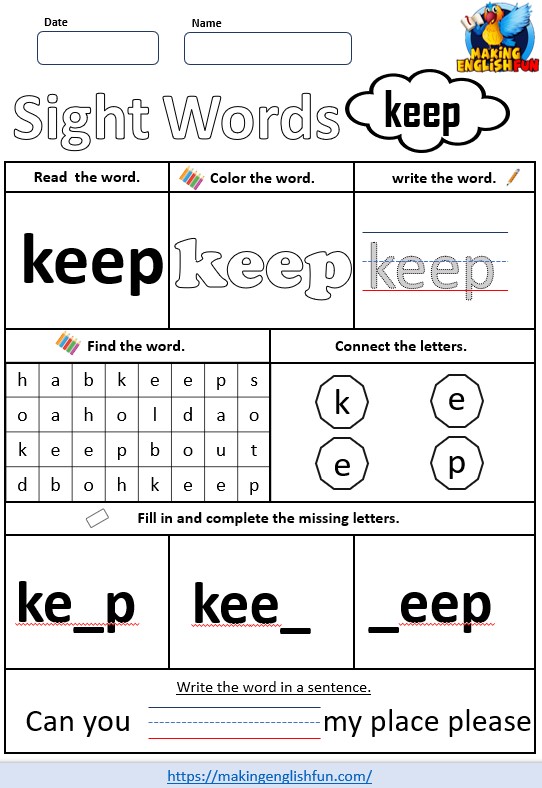10 Hardest English Words to Pronounce for Spanish Speakers
For Spanish speakers, diving into English offers its own set of pronunciation challenges. The two languages, while sharing some commonalities, differ significantly in their phonetic structures.
English, with its wide array of vowel sounds and consonant combinations, can present particularly tricky hurdles for those whose native language is Spanish.
Here, we explore English words that are notoriously difficult for Spanish speakers to pronounce. These words aren’t just long or complex; they specifically highlight pronunciation challenges arising from the differences between Spanish and English phonetics.

Difficult to pronounce Words in other languages.
Just before we jump in we have a list of other languages that may find certain words in English to pronounce you can check them out if you wish.
- Words difficult to pronounce for Chinese speakers
- Words difficult to pronounce for French speakers
- Words difficult to pronounce for Spanish speakers
10 Hardest English Words to Pronounce for Spanish Speakers
Here are 10 of the “best” of the most difficult to pronounce words for Spanish speakers. If you have more feel free to put them in the comments section below!
1. Squirrel — the “qu” and “rl” combination
- Squirrel – [ˈskwɜr(ə)l] (American), [ˈskwɪrəl] (British)
The word “squirrel” is a tongue-twister for many Spanish speakers. The challenge lies in the “qu” combination, which in English sounds like “kw,” and the “rl” blend at the end.
Spanish does not typically combine consonants in this way, especially not in the fluid manner required for the word “squirrel.” Additionally, the rhotic “r” sound, pronounced more prominently in English, adds to the difficulty.
Squirrel pronunciation tips
| Common Mistake | Correction |
|---|---|
| Mistake: Struggling with the “qu” sound and the “rl” blend. | Tip: Start with saying “k” and “w” quickly together, followed by practicing the rolled “r” and ending with “l”. |
2. Thought — the “th” sound
- Thought – [θɔːt]
In Spanish, the closest equivalent would be the “t” sound, but the “th” in “thought” requires a different tongue placement and air flow.
Thought pronunciation tips
| Common Mistake | Correction |
|---|---|
| Mistake: Replacing “th” with a “t” or “d” sound. | Tip: Gently rest your tongue between your teeth and blow air out to create the “th” sound. |
3. Clothes — the “th” and “z” sounds
- Clothes – [kloʊðz]
Both of these sounds require tongue placements that are uncommon in Spanish.
The “th” is voiced, demanding the tongue be placed between the teeth, while the “z” sound involves a vocalized sibilant produced by a buzzing vibration.
Clothes pronunciation tips
| Common Mistake | Correction |
|---|---|
| Mistake: Replacing “th” with a “t” or “d” sound. | Tip: Gently rest your tongue between your teeth and blow air out to create the “th” sound. |
4. Sheet — the “sh” sound
- Sheet – [ʃiːt]
The “sheet” pronunciation can be challenging due to the “sh” sound, a consonant blend not found in Spanish.
This sound requires slightly rounding the lips and pushing air out, which is a different mouth movement than any Spanish phoneme.
Spanish speakers might be tempted to replace it with a softer “s” or “ch” sound, which changes the meaning of the word entirely.
Sheet pronunciation tips
| Common Mistake | Correction |
|---|---|
| Mistake: Pronouncing “sh” as “s” or “ch”. | Tip: Round your lips and push air out quietly to create the “sh” sound without using your voice. |

5. Vase — the “v” sound
- Vase – [vɑːz] (American), [vɑːs] (British)
For Spanish speakers, “vase” is tricky due to the “v” sound. In Spanish, “v” is often pronounced similarly to “b,” but in English, “v” requires a lip-teeth vibration that is not typically used in Spanish.
This subtle yet crucial difference can significantly affect the clarity of pronunciation.
Vase pronunciation tips
| Common Mistake | Correction |
|---|---|
| Mistake: Replacing “v” with “b”. | Tip: Place your upper teeth slightly over your lower lip and gently vibrate your vocal cords to create the “v” sound. |
6. Jewelry — the “j” and “ew” sounds
- Jewelry – [ˈdʒuːəlri]
“Jewelry” is a tough word due to the “j” sound, which in English is a blend of “d” and “zh,” and the “ew” vowel sound.
The “j” sound is not common in Spanish, and the “ew” combines two vowel sounds rapidly, a combination unusual in Spanish phonology.
Jewelry pronunciation tips
| Common Mistake | Correction |
|---|---|
| Mistake: Pronouncing “j” as “h” or “y”. | Tip: Start with a soft “d” sound and blend it into a “zh,” followed by the “ew” sound, combining “e” and “oo”. |
7. Island — silent “s”
- Island – [ˈaɪlənd]
The challenge with “island” for Spanish speakers lies in the silent “s.” Spanish is largely a phonetic language, so the concept of a silent letter can be confusing.
The tendency might be to pronounce the “s,” which changes the word completely.
Island pronunciation tips
| Common Mistake | Correction |
|---|---|
| Mistake: Pronouncing the silent “s”. | Tip: Remember to skip the “s” entirely and pronounce it as “eye-land.” |
8. Comfortable — reduced vowel sound
- Comfortable – [ˈkʌmftəbəl]
“Comfortable” can be tricky because of its reduced vowel sound, known as the schwa, in the second syllable.
Spanish speakers may attempt to pronounce every vowel clearly, which alters the rhythm and sound of the word in English.
Comfortable pronunciation tips
| Common Mistake | Correction |
|---|---|
| Mistake: Pronouncing every vowel distinctly. | Tip: Soften and reduce the vowel sound in the second syllable, focusing on the rhythm of the word. |
9. Queue — unusual vowel sound
- Queue – [kjuː]
The word “queue” is challenging because it combines a consonant and vowel sound that is quite rare in Spanish.
The “qu” in “queue” is pronounced like “k” followed by a “y” sound, and the “ue” is a long “oo” sound, which is an unusual combination in Spanish.
Queue pronunciation tips
| Common Mistake | Correction |
|---|---|
| Mistake: Mispronouncing the “qu” as “k” and “ue” incorrectly. | Tip: Think of it as “kyoo,” with the “ue” sounding like a long “oo.” |
10. Yacht — unique consonant blend
- Yacht – [jɑːt]
“Yacht” presents difficulties with its initial “y” sound followed by a hard “ch” sound. This combination of sounds, particularly the guttural “ch,” is not found in Spanish. The pronunciation requires a blend of consonant sounds that Spanish speakers may not be accustomed to.
Yacht pronunciation tips
| Common Mistake | Correction |
|---|---|
| Mistake: Softening the “ch” or mispronouncing the “y”. | Tip: Start with a clear “y” sound and follow it with a guttural “ch,” similar to the sound in “loch.” |
Tips for Mastering English Vowels and Consonants
For Spanish speakers, mastering English vowels and consonants can be a game-changer in pronunciation. Unlike Spanish, English has a wide variety of vowel sounds, including long and short versions.
Practicing with minimal pairs, like “ship” and “sheep,” can help distinguish these subtle differences. Consonants also pose challenges, especially sounds like “th” or the voiced “v,” which don’t exist in Spanish.
Tongue twisters are an excellent way to practice these tricky consonants. Also, recording your pronunciation and comparing it with native speakers can provide valuable feedback.
Remember, repetition and patience are key – consistent practice will gradually improve your ability to pronounce English vowels and consonants clearly.
The Influence of Spanish on English Pronunciation
Spanish speakers often bring the phonetic patterns of their native language into English, influencing their pronunciation. This is known as language transfer.
For instance, the tendency to pronounce English “v” as a Spanish “b” or the difficulty with the English “h” sound, which is silent in Spanish, are common examples.
Being aware of these influences is the first step to correcting them. It’s crucial to focus on the sounds that are different in English, like the “th” or the hard “r.”
Try to isolate these sounds in practice sessions, and compare your pronunciation to native English speakers.
Understanding how your native language influences your English pronunciation can lead to more targeted and effective practice.
Understanding English Stress and Intonation Patterns
English stress and intonation patterns can be particularly challenging for Spanish speakers, as they differ significantly from Spanish.
English uses stress timing, where the rhythm of speech is determined by stressed syllables, unlike Spanish’s syllable-timing.
Misplacing stress in English can change the meaning of words or make sentences difficult to understand. To improve, pay attention to the stress patterns in words and sentences when listening to native speakers.
Practice by reading aloud and emphasizing stressed syllables or words. Singing along to English songs can also be a fun way to get used to the rhythm and intonation of the language.
Remember, getting the stress right is as important as getting the sounds right.
FAQs on English Pronunciation for Spanish Speakers
Why do I find English pronunciation particularly challenging?
English and Spanish have different phonetic systems. English has a wider range of vowel sounds and some consonants that don’t exist in Spanish, like “th.”
Also, the stress and intonation patterns in English are quite distinct from Spanish, making pronunciation challenging for Spanish speakers.
How can I improve my English ‘r’ sound?
The English “r” is different from the rolled “r” in Spanish. Practice by positioning the tip of your tongue near the front roof of your mouth without touching it.
Try making the sound in words like “right” and “rain” where the “r” is more pronounced.
What’s the best way to practice English vowels?
English vowels can be tricky due to their variety and subtlety. Listening to and imitating native speakers is very effective.
Pay attention to the shape of the mouth and position of the tongue. Use resources like online pronunciation guides or language learning apps to practice.
Are there any tricks to mastering English consonant sounds that don’t exist in Spanish?
For sounds like “th,” practice by placing your tongue between or just behind your front teeth and blowing air out.
For “v,” gently bite your lower lip and vibrate your vocal cords. Repetitive practice and listening to these sounds in words can help.
Is watching English movies and shows helpful for improving pronunciation?
Yes, watching English-language media is a great way to improve your pronunciation.
It exposes you to various accents and speaking styles. Try to mimic the pronunciation and intonation of the characters, which can be a fun and effective practice method.
Conclusion
Remember that mastering a new language’s sounds takes time and practice. Each word you learn to pronounce correctly is a step forward in your language journey.
Embrace the uniqueness of English phonetics with curiosity and enthusiasm. Don’t be disheartened by initial challenges; instead, view them as opportunities to grow and refine your skills.
Keep practicing, listening, and speaking, and soon, you’ll find that you’re not only understanding English better but also expressing yourself more clearly and confidently in this beautiful language. (If we say so ourselves!)
References
- https://trufluency.com/the-15-most-difficult-english-words-to-pronounce-for-spanish-speakers/
- https://fluencyspace.com/pronunciation/difficult-business-words-for-spanish-speakers/
- https://blog.culturealley.com/2014/07/english-words-that-spanish-speakers-mispronounce/
- https://www.linkedin.com/pulse/11-english-words-spanish-speakers-mispronounce-laura-brewer







